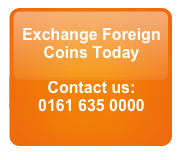How to exchange Pre-Euro coins
One of the side effects of the Euro’s introduction in 1999 was the disappearance of many of Europe’s previous currencies. Fourteen national currencies were withdrawn from circulation when the Euro was first introduced, and another six have followed suit. This significant change left many coin collectors and ordinary Europeans with pockets full of small change in currencies that no longer exist. Today, these coins stand as tangible pieces of European history.
If you have pre-Euro coins that you’d like to exchange for cash, we can assist. We exchange pre-Euro coins for individuals, businesses, charities, schools, and hospitals. Some pre-Euro coins are worth more than others. For example, certain German coins are exchangeable; however, coins like the French Franc have only a nominal value. If you’d like to exchange foreign coins, please visit our exchange page. It’s quick, straightforward, and hassle-free.
Why exchange Pre-Euro coins with us?
Pre Euro Currency Information
Pre-Euro coins exist in twenty national currencies. Austria’s national currency was the schilling, while Belgium, France, Luxembourg and Monaco all issued francs. Italy, Vatican City, San Marino and Malta all used currencies called lira, while the name of the German mark was echoed in Finland’s markka. Ireland’s pound, also called a punt, was joined in retirement by Cyprus’s pound. In addition to these currencies, the Dutch guilder, Portuguese escudo, Spanish peseta, Greek Drachma, Slovenian tolar, Slovak koruna and Estonian kroon have all been replaced by the Euro.
With twenty pre-Euro currencies, there is an enormous variety of pre-Euro coins. Each currency had its own peculiarities. For example, the Dutch guilder resembles modern Dutch Euro coins in some ways, such as bearing an image of the monarch of the Netherlands on the obverse; however, its eccentric structure, which included a 2.5-guilder coin, is now obsolete.
Some pre-Euro currencies had a long and distinguished history. The Dutch guilder, for example, symbolised the legacy of centuries of Dutch trading strength. Others were more recent — the Slovak koruna, for instance, had only been introduced in 1992 to replace the Czechoslovak koruna, which was itself a post-WWI creation. Likewise, the Irish pound was a result of Irish independence in the 1920s, although it drew on a long history of Irish coinage under British rule.
Just as Irish pre-Euro coins drew on British coinage for their design, many pre-Euro currencies based their structures on those of neighbouring countries. The Monegasque franc, for example, used the same denomination values as the French franc, while the Sammarinese lira was identical to the Italian lira.
The design of coins before the switch to the Euro was quite varied. Some countries used simple designs, with the bust of the monarch or another ruler on the obverse, and the denomination along with a national symbol on the reverse.
This type of design was found in the Netherlands, Belgium, Luxembourg, Vatican City, and several other countries. Other coinages included national symbols such as common animals, landmarks, historic buildings, coats of arms, or famous historical leaders. Eastern European nations, struggling to assert their identities following the collapse of the Soviet Union, tended to have the most diverse coin designs, with a wide range of patriotic symbols.
Need Help
Contact our friendly experts on 0161 635 0000 or email admin@cash4coins.co.uk

